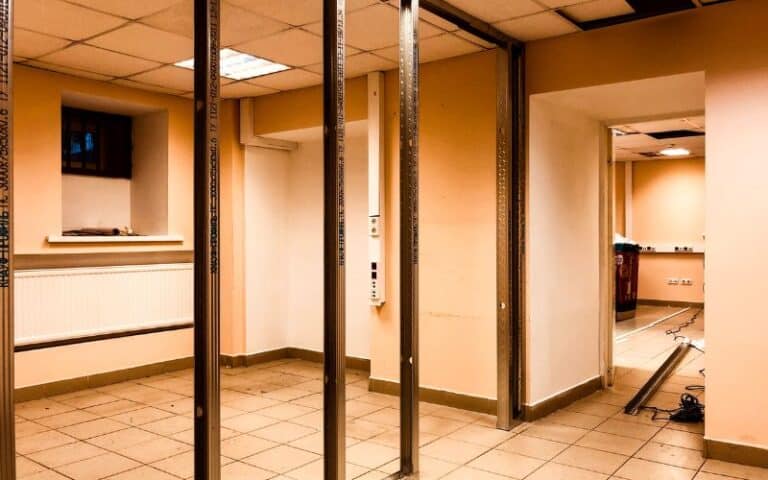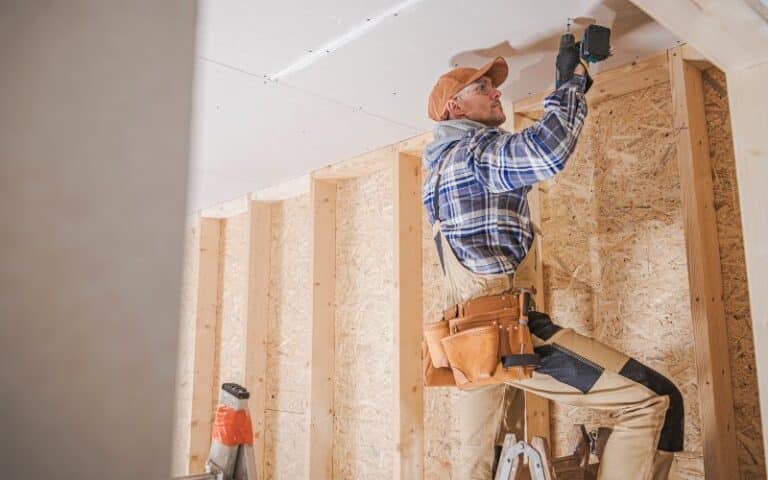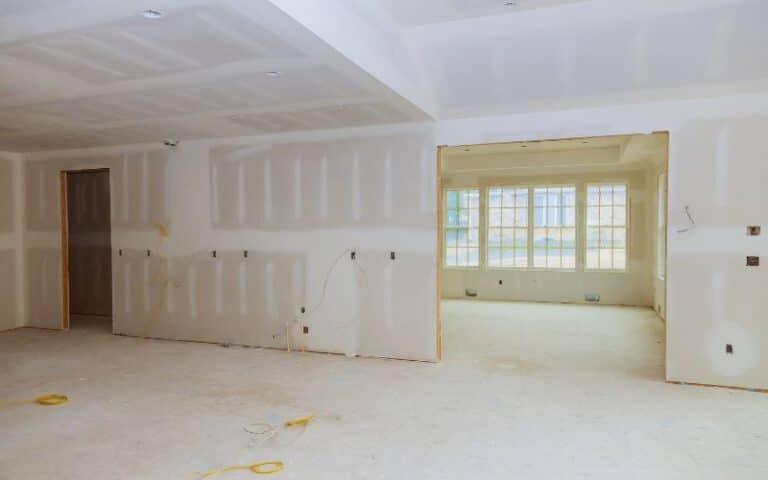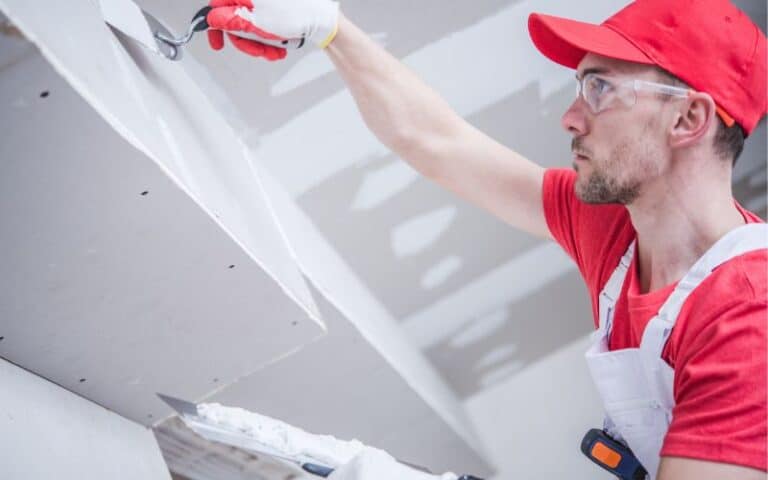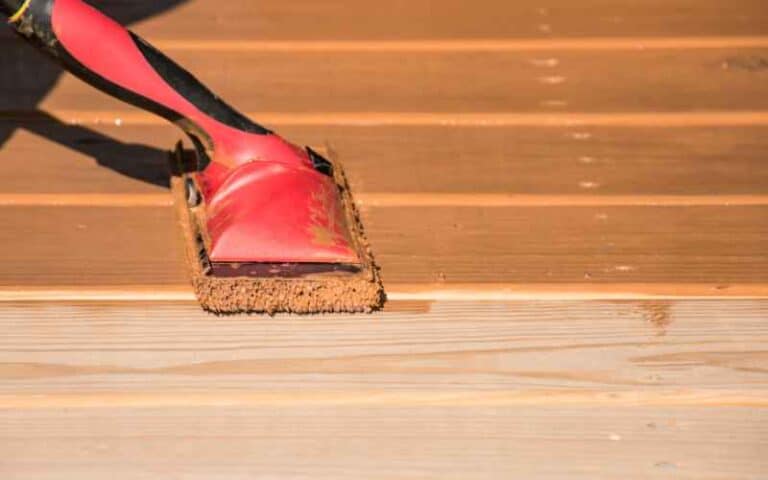Drywall is a popular construction material for building walls and ceilings in modern homes.
However, imagine you just moved into a new home or spent your weekend repainting your drywall with a fresh coat.
And you see the wall studs through the drywall. Is this a normal sight, or should you be alarmed? First, let’s consider if drywall studs should be visible.
You can see a wall stud through drywall when the installation is poor. If your wall stud is visible through your drywall, it’s a sign that it absorbs dust and moisture. Also, this can generally signify substandard drywall.
This article explains everything you need to know about a visible wall stud through the drywall.
Ready for a Drywall Quiz?
Why Can I See Wall Studs Through My Drywall?
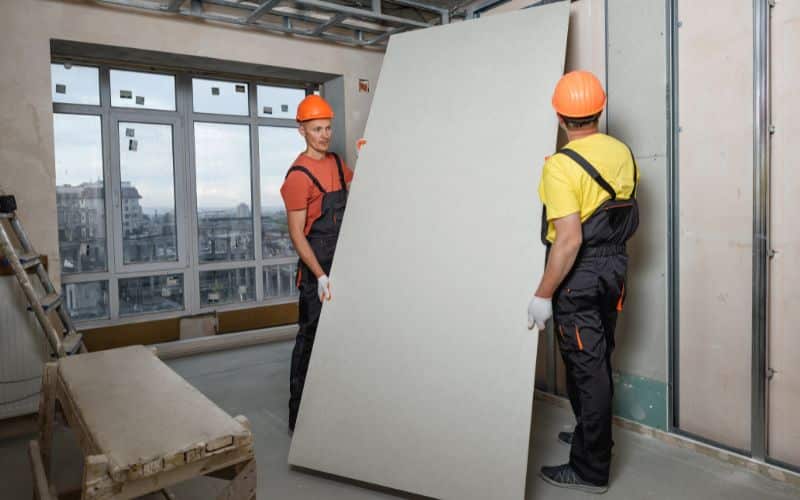
Sometimes a homeowner might choose decorative designs such as transparent bricks and other materials that make the wall stud visible.
But in most cases, seeing the wall studs through the drywall is inappropriate. That is because it might indicate a problem in your drywall.
There are various reasons your wall stud can be visible through the drywall.
These reasons include the following;
#1. Substandard Drywall
When your drywall thickness is not up to standard (1⁄2 inch), it might not be thick enough to cover the wall stud. Therefore your wall stud will be visible.
Thinner drywall tends to break easily, thus making it possible to see your wall stud.
#2. Poor Drywall Installation
Lack of proper drywall installation makes your wall uneven, probably leaving spaces between the sheets. These gaps allow you to see through your drywall.
Furthermore, if you loosely screw a drywall nail to the studs, it can protrude out, making the stud visible.
#3. Insulation
Your wall and ceiling insulation prevents your home interior from different outdoor temperatures. This insulator acts as a buffer between your walls.
So lack of proper insulation between your drywalls enables excess heat transfers within the walls.
And when the outdoor temperature is not the same as the indoor temperature, your wall is vulnerable to condensation. Sometimes it might result in mold issues within the wall cavity.
#4. Moisture Damage
When drywall absorbs too much moisture, it may bulge, causing the wall stud to be visible. When the cool part of your drywall absorbs moisture, it might appear dry, but it will trap dust.
The dust it traps then appears as stud bleeding visible through your drywall. Also, too much moisture can soften your drywall, leaving it susceptible to cracking and revealing studs.
All these cause drywall with a visible wall and can also lead to dark shadow marks appearing on your wall, called wall ghosting. However, these two phenomena are not the same.
The table below explains the difference between wall ghosting and visible stud in drywall.
| Wall Ghosting | Visible Wall Stud in Drywall |
|---|---|
| The appearance of faint marks is the stud outline behind the drywall. | The appearance of studs through the drywall. |
| The temperature difference is mainly responsible for wall ghosting. | It has numerous causes, which can be because of improper installation and lots more. |
What Are the Best Ways to Prevent Studs From Showing Through Drywall?
Studs are the upright structure supporting the drywall boards in a wall. And it’s an essential panel underneath the drywall.
However, when you can see the wall stud through drywall, your drywall might be less beautiful.
The best way to prevent this includes;
#1. Installing a Thicker Drywall
One of the best ways to prevent visible wall studs through drywall is to utilize a thicker drywall board.
The standard thickness size for a drywall board is always about ½ inch. However, some panels are about ⅝ inch or even ¾ inch.
Therefore, a thicker drywall panel will reduce the chance of the stud’s protrusion, thus rendering it less visible.
#2. Use Resilient Channels
A resilient channel is another option that makes the wall stud-less visible, installed perpendicular to the studs. These channels serve as sound-absorbing barriers.
Aside from that, they create a gap between the stud and drywall that prevent you from seeing the stud through the drywall.
This gap enables the drywall to flex and take some of the force from the studs, decreasing their visibility.
#3. Applying Multiple Coats of Joint Compound
A joint compound is a gypsum-based paint that fills the holes between drywall boards, creating a smooth texture.
Laying multiple coats of joint compound will help to hide the studs by building a thick coating of material over the wall. However, let each coat dry completely before applying the next coat.
#4. Use Drywall Anchors
Drywall anchors are little plastic or metal devices that tighten objects firmly to drywall. You can also use them to prevent studs’ visibility through the drywall by providing an extra support layer.
#5. Install Furring Strips
Furring strips are thin strips of wood or metal connected to the studs before installing the drywall.
The strips create a small gap between the drywall and the studs, which can help to prevent the studs from showing through.
When you attach furring strips to the studs with nails, you can then fix the drywall to the strips.
#6. Proper Insulation Installation
Ensuring your house is perfectly insulated will help reduce cooling and heating expenses. It will also make your wall look fresh.
Proper insulation between your house walls and roofs decreases the probability of forming any cold spot. Therefore no area will absorb moisture and trap dust.
Suppose you are still determining which insulation material you can install; it’s best to ask for professional recommendations.
How to Fix Drywall with Visible Wall Studs
Fixing drywall with visible studs can be challenging, but you can do it yourself. The fixing process is mainly known as drywall patching, a popular DIY project.
Here are the steps to follow;
#1. Prepare the Area
The first step of drywall patching is to prepare the area surrounding the visible studs by removing any defective drywall and cleaning any dirt or dust around it.
It will help the new drywall attach firmly to the wall.
To cut the drywall;
- Use a stud finder to discover the stud around the damaged area and put a level above the area.
- Dent the line above and under the area.
- Use a drywall saw to stab through the wall and cut each line to the stud.
- Measure between ½ to ¾ inches with a square and dot the stud center.
- Then, cut out the drywall from the stud with a utility knife.
#2. Attach a Support
You can’t just tighten a patch to the stud ends like that. The drywall is a weak material; it will never survive any hit and would crack quickly.
So to avoid all these, it’s best to fix a small piece of wood at the cutout center. Then you screw it into the existing drywall. Also, if you want to pad your stud, you must go through this process.
#3. Measure and Cut Patch
Before cutting your patch, first, measure the hole on your wall. Then measure it on your piece and subtract ⅛ for proper fitting.
Cutting your drywall is very straightforward. You only need to mark the paper and cut off the piece.
Then you can start measuring the small sides, draw a straight line across the whole length of drywall, and cut off that side.
#4. Fix the Patch
After cutting your drywall patch, the next step is to fix it into the hole. It’s best not to force the patch if you encounter difficulties because it might crack, and you will have to cut another one.
You can trim any excessive places with a utility knife or drywall rasp. Then, when you are sure the patch fits the hole, you can fix the patch into place with a drywall screw.
Putting the nails below the drywall surface is best, so the mud will have a gap to seal.
#5. Tape and Mud the Repair
It is the last step of drywall patching. All you have to do is;
- Cover the holes between the wall edges with adhering mesh tape.
- Use joint compound to seal the hole and leave it to dry.
- Mud the area until you have a smooth wall.
- Then paint to your desired choice.
However, suppose you are not satisfied with the result, you must repeat the mudding and sanding steps until you attain your desired results. Then you paint.
And congratulations, your drywall is back to normal.
What Causes Studs to Push Out of Drywall?
Various reasons cause your stud to push out of drywall. Here are some reasons;
- Too much moisture in the wall causes the studs to expand, which then causes the stud to push against the drywall.
- Also, if you overload your wall with heavy items, you will overload your stud, causing it to push out of the drywall.
- Furthermore, if your drywall installation is inadequately secured to the stud, it will cause the stud to push out of the drywall.

